 While I love a good piece of whole grain toast slathered with peanut butter for breakfast, there’s something to be said for stuffing your toast full of flavor before you bake it. It makes for a much easier get-out-the-door-fast kind of breakfast (or snack) that way.
While I love a good piece of whole grain toast slathered with peanut butter for breakfast, there’s something to be said for stuffing your toast full of flavor before you bake it. It makes for a much easier get-out-the-door-fast kind of breakfast (or snack) that way.
 The Dough
The Dough
Here’s the thing: I dig a good, flavorful filling for bread, oftentimes they end up being very fussy during the kneading stage. By itself, this is a perfectly nice dough. It’s lightly orangey and slightly sweet, and it’s easy to handle. Without any additions at all it would make a great little twist on your average white toast bread.
But to get a good flavor dispersion, you really have to jam in a ton of cranberries and walnuts. These tend to ruin the smooth consistency of the dough, and can be hard to incorporate evenly. Chunky add-ins can make it hard to form a good crust, and just serve as an obstacle to keeping the dough in one piece until they’re set during baking.
The Braid
The other slightly annoying thing about this bread is Reinhart’s suggested shaping — the dramatic double braid. It’s one braid on top of the other. My first braid looked great — tight and uniform, tucked together neatly. The second, smaller braid refused to stay perched atop the big braid during the final rise, opting instead to slowly unravel and slide down the side, and forcing me to continually reposition it, trying very carefully not to deflate it. Argh.
Luckily, the final effect looked a bit more rustic and freeform than I anticipated, but still appetizing. If I make this bread again, I’ll probably stick to a single braid, or use a loaf pan, eliminating the stress of shaping and braiding altogether.

Mixing It Up…Next Time
But you know what I really want to try with this recipe? Incorporating the flavorings into the cornbread recipe from last week’s post, getting it even closer to being a Thanksgiving flavor menagerie. Would topping that with french fried onions be taking it too far?
This cranberry walnut bread comes together relatively quickly, and stays pretty soft and tasty for a few days. Make one on Sunday night for a Monday morning toast that’ll make your weekday breakfast a little more flavorful.
Cranberry Walnut Celebration Bread
Adapted (very slightly) from Peter Reinhart’s The Bread Baker’s Apprentice. Yields 1 large braided loaf.
Ingredients
- 3 cups bread flour
- 3 tablespoons granulated sugar
- 3/4 tsp salt
- 3 1/2 tsp instant yeast
- 1 1/2 orange or lemon zest
- 2 eggs, slightly beaten
- 1/2 cup milk + 1/2 tablespoon vinegar, room temperature
- 2 tablespoons unsalted butter, melted
- 1/4 cup water, room temperature
- 1 cup sweetened, dried cranberries
- 3/4 cup coarsely chopped walnuts
- 1 egg, whisked until frothy, for egg wash
Cranbery Walnut Bread Instructions
- Stir together flour, sugar, salt, yeast and zest in a large mixing bowl. Add eggs, buttermilk and butter. Stir, slowly adding water to make a soft, pliable dough.
- Transfer dough to a floured counter and knead for about 5 minutes. The dough should smooth and soft. Add water or flour as needed to adjust consistency. Add cranberries and knead for another 2 minutes, then add walnuts and gently knead in until evenly distributed.
- A method that works well for me when it comes to incorporating large chunks of ingredients such as cranberries is to start by flattening the dough out into a rough rectangle. Place a scoop of cranberries to one side of the dough, and fold the other side over. Flatten and fold a few more times, then repeat with the rest of the cranberries.
- Transfer to an oiled bowl and cover in plastic wrap. Let rise for 1.5-2 hours, or until dough doubles in size.
- Transfer to a counter and deflate slightly. Either transfer to a greased loaf pan or divide into 3 pieces and braid. Place pan or loaf on a sheet pan and brush with half of the egg wash.
- Proof uncovered at room temperature for about 90 minutes, or until dough nearly doubles. Brush the loaf a second time with the rest of the egg wash. Preheat the oven to 325F when you’ve got about 30 minutes left to rise.
- Bake for approximately 25 minutes, then rotate pan and continue baking for another 25-30 minutes. The loaf should be a deep golden brown and sound hollow when thumped on the bottom.
- Remove the cranberry walnut bread from the pan and transfer it to a cooling rack. Allow the loaf to cool for at least an hour before slicing and serving.

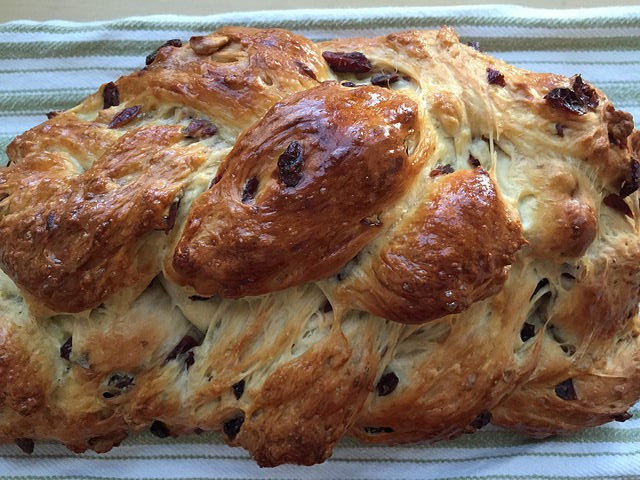


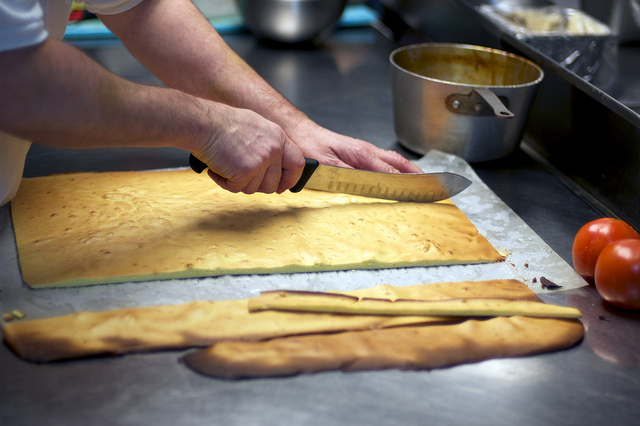
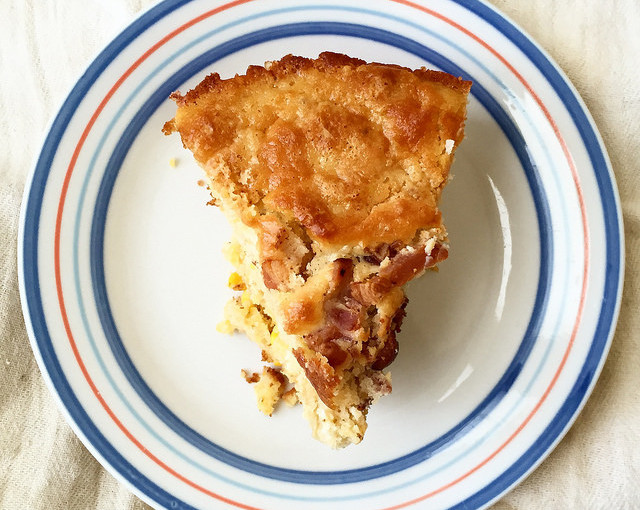



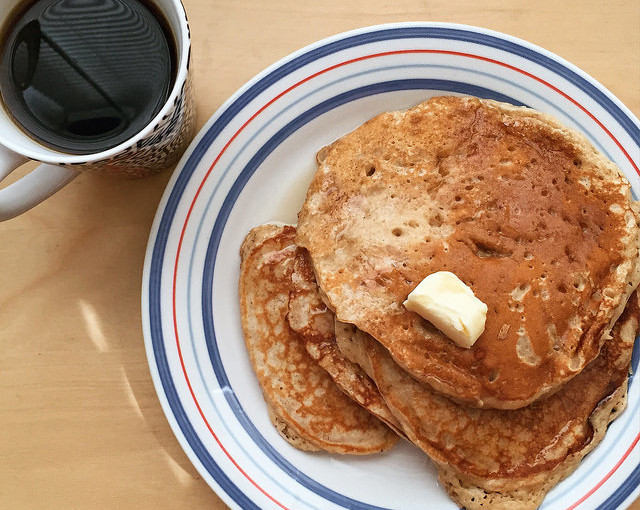



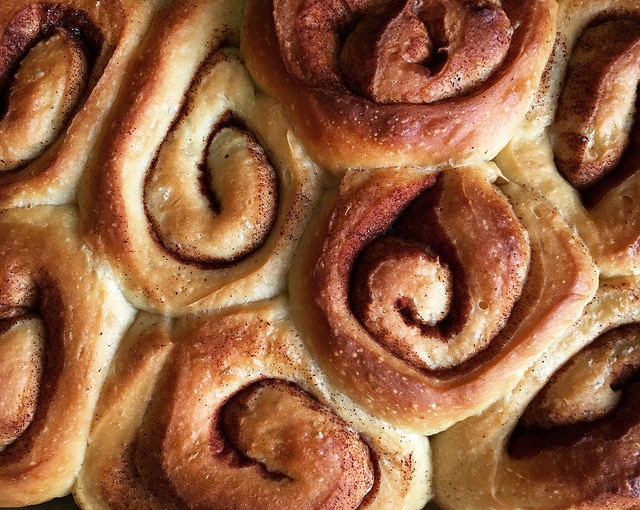
 For a lot of Americans (especially those who make frequent trips through an airport or mall), Cinnabon is the apex of cinnamon roll-goodness. But frankly they tend to be cloyingly sweet, huge, and not consistently fresh. This recipe from The Bread Baker’s Apprentice yields cinnmon buns that are fluffy and balanced, not overly sweet or buttery, and just the right size for breakfast.
For a lot of Americans (especially those who make frequent trips through an airport or mall), Cinnabon is the apex of cinnamon roll-goodness. But frankly they tend to be cloyingly sweet, huge, and not consistently fresh. This recipe from The Bread Baker’s Apprentice yields cinnmon buns that are fluffy and balanced, not overly sweet or buttery, and just the right size for breakfast.
